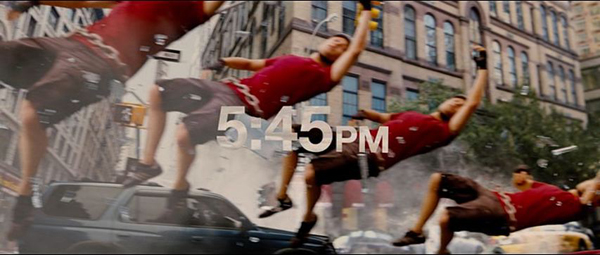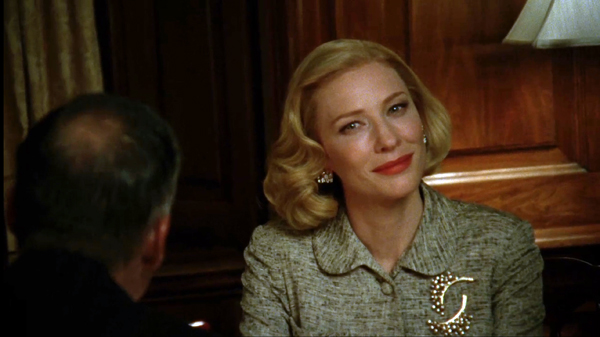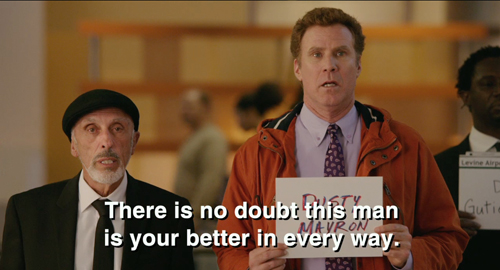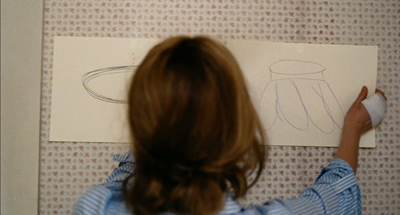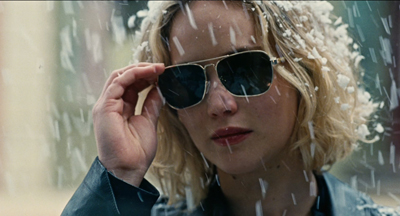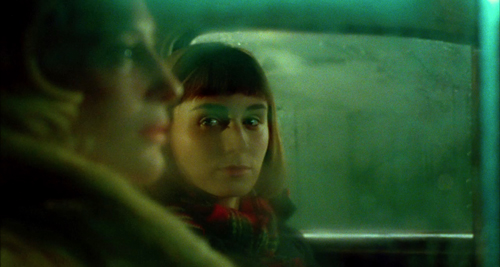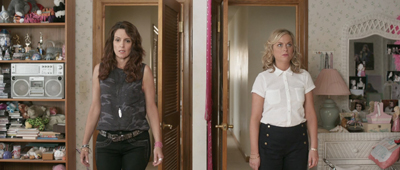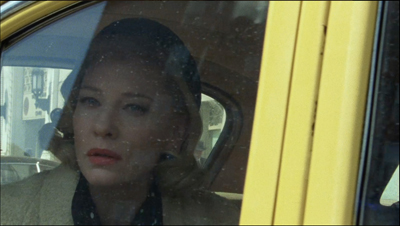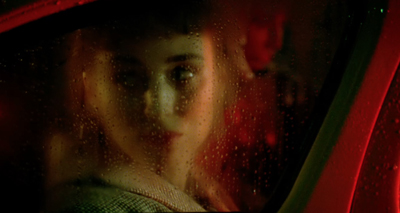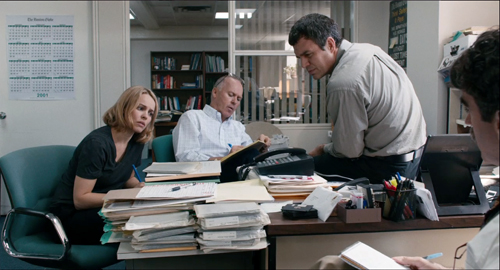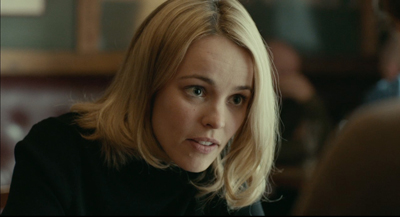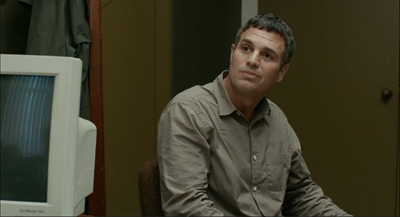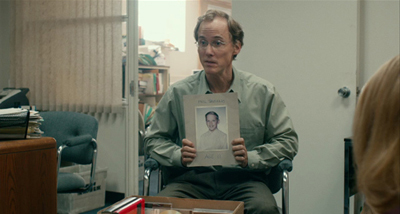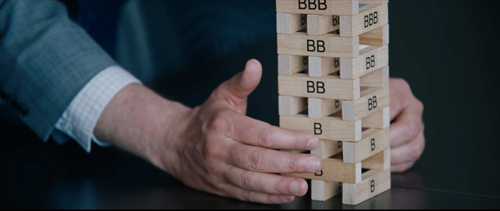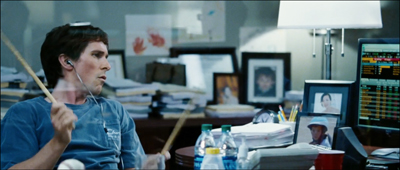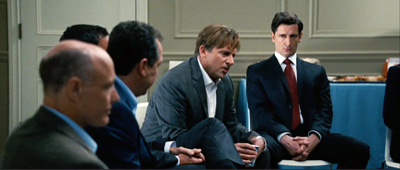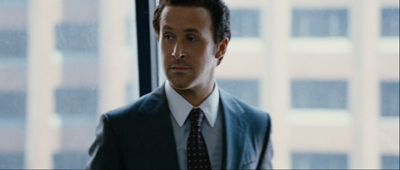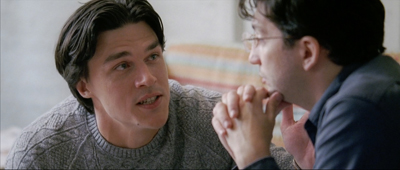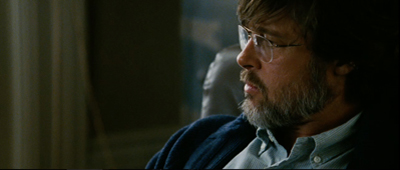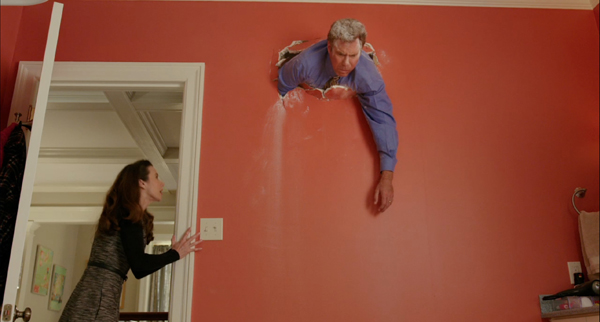Archive for January 2016
Open secrets of classical storytelling: Narrative analysis 101
Premium Rush (David Koepp, 2012).
DB here:
After nine years, over 700 entries, and many essays and other stuff, this contraption of a website has started to intimidate us.
If we’re intimidated, you might be flabbergasted. Although a set of categories sits on the right to guide your exploration of this tangled databank, those too loom large and discouraging. So we’ve decided to tidy up by–how else?–adding another entry.
We’ll occasionally offer a stripped-down guide to our writing on certain topics. We’ll steer you to entries that we think represent the core of our thinking on a problem, and then add some that probe more deeply, for those who want to go beyond the basics. Since one of our areas is narrative theory and analysis, a good first effort, we thought, would be to produce a sort of DIY syllabus that systematically surveys the topic as we’ve explored it. And since we’ve often written about classical Hollywood storytelling, and since many of our readers are interested in that…well, the syllabus sort of wrote itself.
We call these ideas open secrets of storytelling because by and large they aren’t acknowledged in the screenplay manuals that aspiring writers read. In most cases, we’ve had to devise our own concepts and terms, based on watching hundreds of movies. Yet these observations are wide open, available in our books and on this site.
Now comes our chance to pull them together. The result isn’t an utterly comprehensive theory of classical Hollywood narrative, but it does give a fair sampling of the range of questions we’ve tried to answer about it. The topics, linked to essays and blog entries, are arranged in three layers.
The most basic layer is an array of key ideas about story worlds, plot structures, and strategies of narration. These ideas are introduced in the first entry, “Understanding film narrative: The trailer.” Discussions of other basic concepts follow. Just reading the entries pegged to those topics, you could get a solid sense of what we’re aiming at. For most of those, we also propose a film you might view to test how the ideas work.
At a second level, for some topics we include some entries that dig deeper. They’re either more complex and advanced, or they provide some historical background.
Finally, after we’ve reviewed the key topics, we add a batch of case studies that use several of the tools we’ve laid out. These are usually very deep dives into particular films. They aim to show how the analytical ideas can bring out distinctive features of particular movies. The case studies are pretty wide-ranging, but they tend to hover around specific problems, such as adaptation or the creation of fantasy worlds.
How could you use this resource? A teacher in high school or college could draw on it as a partial syllabus or just a thumbnail list of supplementary material for a course. Teachers using Film Art: An Introduction could treat it as a supplement to our section of Chapter 3 on classical narrative. Or a student might find an idea for a paper in this vicinity.
Since we’ve always tried to link film studies and filmmaking, we hope that practitioners might be interested too. For example, an aspiring screenwriter could take this as a weekly reading/viewing agenda, treating it as a free course in story analysis. General readers who simply want to know more about the mechanics of cinematic storytelling should find something provocative here too. For everybody: Feel free to use it as Narrative Analysis 101.
We thank our many loyal readers of this blog, as well as the many more who have just dropped by once or twice. Your continued interest has helped us keep going.
Open Secrets of Hollywood Storytelling
The basics
Understanding film narrative: The trailer. Suggested viewing: The Wolf of Wall Street.
Advanced: Three Dimensions of Film Narrative: Narration, plot structure, and story worlds. Suggested viewings: The Godfather, Jezebel.
Advanced: Stories beget stories. Suggested viewing: American Hustle.
Actions and agents
Introduction to classical plot structure. Suggested viewing: Many possibilities listed.
Historical background: Is there a 3-act structure?
Action films: Did spectacle kill classical plotting? Suggested viewing: Mission: Impossible 3.
Advanced: Block construction. Suggested viewing: Kill Bill, Pulp Fiction.
How many protagonists? Suggested viewing: The Big Short.
The importance of coincidence. Suggested viewing: Serendipity.
Narrative parallels among characters and periods. Suggested viewing: Julie and Julia, Enchantment.
Advanced: Fine-grained parallels between scenes. Suggested viewing: The Prestige.
Time shifts: How flashbacks work. Suggested viewing: The Power and the Glory.
Advanced: Time shifts without flashbacks. Suggested viewing: Exodus.
Advanced: Nested flashbacks. Suggested viewing: Passage to Marseille, The Locket.
Historical background: Flashbacks and plot problems. Suggested viewing: The Great Moment, All about Eve.
Replays. Suggested viewing: Mildred Pierce.
Advanced: The auditory replay. Suggested viewing: Sudden Fear.
Network narratives. Suggested viewing: Grand Hotel.
Forking-path plotting. Suggested viewing: Source Code.
Advanced: Film Futures. Suggested viewing: Sliding Doors.
Historical background: What-if narratives. Suggested viewing: Dangerous Corner
Beginnings and endings: Molly Wanted More. Suggested viewing: Snow White and the Seven Dwarfs, The Silence of the Lambs.
Telling more or less
Visual storytelling. Suggested viewing: Mission: Impossible.
The hook between scenes. Suggested viewing: Dr. Mabuse, The Gambler; National Treasure.
Narration: omniscient versus restricted. Suggested viewing: Cloverfield.
Historical background: Hitchcock, suspense, and surprise.
Alignment and allegiance. Suggested viewing: House by the River.
Character subjectivity, optical and mental. Suggested viewing: The Silence of the Lambs.
Historical background: Subjectivity and sound. Suggested viewing: Nightmare Alley, The Fallen Sparrow.
Voice-over narration. Suggested viewing: All about Eve.
Advanced: Dead narrators. Suggested viewing: Laura, Confidence.
Historical background: Inner monologue. Suggested viewing: Strange Interlude.
Case studies in narrative analysis
These are exercises in film criticism that utilize several of the tools laid out above.
Boyhood and Harry Potter: The actors’ lives as part of the narrative.
Eastern Promises: Thematic echoes in an auteur’s narratives.
Gone Girl: Suspense and thriller conventions in fiction and film.
Gravity: Narrative innovation within mainstream cinema.
Inception: Goals and parallel construction; managing multiple plotlines.
Moonrise Kingdom: How to make a modern fairy tale (with some help from merchandising); furnishing alternative worlds.
Premium Rush: How goals and deadlines create tight construction.
Side Effects and Safe Haven: Fragmentary flashbacks and patterns of suspense.
Slumdog Millionaire: Adapting a novel to classical norms.
The Bourne Ultimatum: Plotting across franchise installments.
The Girl with the Dragon Tattoo and The Ghost Writer: Classical structure in genre fiction.
The Hobbit: Adaptation and length; adaptation and change.
The Magnificent Ambersons: How to manipulate time without flashbacks.
The Prestige: Using sound to enrich flashback construction.
The Walk: Each act a different genre.
Tinker Tailor Soldier Spy: Elliptical narration: The viewer’s responsibility.
As we write more entries relevant to narrative, we’ll revisit this DIY syllabus.
Needless to say, we consider these matters more closely in several of our books. See The Classical Hollywood Cinema: Film Style and Mode of Production to 1960, by Kristin, Janet Staiger, and me, and Kristin’s Storytelling in the New Hollywood and Storytelling in Film and Television. For my part, there’s Narration in the Fiction Film and The Way Hollywood Tells It: Story and Style in Modern Movies. I’m at work on a book on narrative innovations in 1940s Hollywood, the central source of much that we encounter in today’s films.
Pick your protagonist(s)
Carol (Todd Haynes, 2015).
DB here:
We’re used to sorting movies by periods, genres, and the individuals associated with them (stars and directors especially). But we can also distinguish films by their styles and narrative forms. So there’s not only a “film noir” style but other group styles, like the tableau approach seen in the silent cinema, or the deep-focus one of Hollywood in the 1940s-1950s. Similarly, we can think about types of storytelling strategies.
Someone might object that at least genre and other categories are in filmmakers’ minds, whereas it’s unlikely that any American in the 1940s set out to make a film noir as we understand it. (That term, and category, came from France, and somewhat after the fact.) Similarly, Ford probably didn’t think he was making a “classically constructed” Western in My Darling Clementine; he was just making a Western.
One reason we might construct these categories is to bring out the principles that filmmakers seem to follow intuitively. Perhaps no screenwriter ever thought explicitly about scene hooks, but the device is common enough to suggest that they believed the device was a useful tool.
Besides bringing out the regularities of filmmakers’ craft in certain times and places, constructing categories allows us to understand the creative choices they face. Maybe you handle a scene in a two-shot or in several reverse-angled singles. Both are permitted, each has certain advantages, and filmmakers spontaneously choose among these alternatives.
In effect, we’re reconstructing the menu of options available to filmmakers in certain times and places. If we do it carefully, we gain understanding of what each option can yield, and what certain filmmakers can achieve if they try something new.
Kristin and I have been in this game for decades, and our work on norms of film form and style has surfaced in our books, lectures, and blog entries. One set of analytical categories we’ve proposed is based on how movies use their protagonists. I was struck by how many films at end of 2015 and the start of 2016 illustrate a range of options currently available.
It turns out that these options are of long standing; they’re another example of how even recent movies owe a lot to the classical Hollywood tradition. That’s not to say, though, that they might not revise or tweak that tradition. Some filmmakers are innovative by temperament, and besides, there are career rewards when innovations come off. (Just ask the maker of Pulp Fiction.)
The categories depend on determining which character(s) can function as protagonist(s). That depends on the goals, the obstacles to the goals, and the relationship between the goal-striving character and other characters and story lines. Traditionally, in a two-hour Hollywood feature, a principal goal is articulated in the first half-hour or so. Kristin has argued that after this “Setup” portion comes others: a “Complicating Action” (also lasting about half an hour) that changes the goal and in effect creates a new setup; a “Development” which consists of delays, backstory, and fresh obstacles to the goal; a climax that resolves the issue; and an epilogue (screenwriters called it a “tag”) that confirms a certain stability in the situation. The major parts roughly divide the film into quarters, contrary to three-act accounts.
So today I look over the protagonist menu, based on some current offerings. Of course there are spoilers.
One, with benefits
Daddy’s Home.
Take as a baseline the movie organized around one protagonist. A clear example from this holiday season is Daddy’s Home. Stepdad Brad (Will Ferrell) has read all the touchy-feely parenting books and applies their lessons to raising the kids he has inherited by marrying Sara. But Dusty (Mark Wahlberg), Sara’s charming and macho ex, returns from his mysterious life in espionage and rapidly takes over the household. In an escalating series of mishaps, Brad proves unable to live up to the hip and edgy things that Dusty dreams up for the kids.
The climax comes when Brad, after showering Megan and Dylan with presents, gets drunk at a basketball game and humiliates them all with a public confession of inadequacy and a pair of unguided free throws. Eventually the battle of the two parenting styles—comforting versus edgy—is resolved when at a father/daughter dance Ward’s nonviolent, somewhat goofy, approach to conflict tamps down an explosive confrontation with a father spoiling for a fight.
The classic situation is established: our protagonist has an antagonist. Dusty is an infighter who seizes control of every situation. As you’d expect, Dusty is winning the race for the kids’ affection during most of the film; even Sara seems to be feeling some of her old attraction to him. As the antagonist, Dusty makes his intentions clear about two-thirds through the film: He will not give in. This precipitates Brad’s suicidally expensive efforts to shower his kids with presents. Deeply shamed, he moves out. Dusty seems to have won.
But Dusty has a weakness. He can’t manage the drab daily responsibilities of parenting—making the kids’ lunches, driving them to school—that Brad enjoys shouldering. At the climax, Dusty has gained respect for Brad and soon remarries, becoming the devoted father of a stepchild. In a traditional comic reversal, he must confront the kid’s birth father, who is a bigger thug than he ever was.
Daddy’s Home reinforces our alignment with the protagonist Ward through his voice-over narration, though at the end the integration of the two families is given by letting Dusty and Sara chime in too. The emphasis on Ward, his confrontations with Dusty and his kids, and the hilariously bad advice offered by Ward’s boss (a classic sidekick role) fulfill a common template for one kind of classical plotting. The protagonist comes to the plot with his goal already decided on, and he has to defend it against a tangible threat.
There’s another option: letting the protagonist discover the goal in the setup. And there’s the possibility of presenting not a single powerful antagonist like Dusty but several. These forces in various ways take on the task of blocking the protagonist’s goal.
Some critics have thought David O. Russell’s Joy somewhat messy, but I think that’s partly because the film spreads the antagonist function across many vivid secondary characters. In my view, as Bernie Sanders might say, the plot remains pretty classical.
The Setup establishes Joy’s life as a disaster. Her childhood dreams of creativity have been forgotten after years with her dysfunctional family and the demands of her children and job. Around the half-hour mark, Joy’s wounds from cleaning up a broken wine glass send her into a dream in which she rebukes herself for her passive life. She wakes up and starts designing a miraculous mop. If her initial goal was simply muddling through, her new goal revolves around transforming her life by creating and marketing this product. This new goal sets the key for the Complicating Action.
At the film’s midpoint, Joy convinces the producer overseeing the Quality Value Channel to add her mop to the offerings. The Development section consists of more obstacles and some triumphs, so that eventually sales take off. But her family butts into her business and plunges her into bankruptcy. This, her darkest moment, is overcome when she confronts her Texan partner and threatens to take him to court for the fraud she has discovered. She pays off her debts. In the epilogue, we see her as a successful businesswoman helping other struggling inventors.
This, of course, is just the film’s spine. In the course of this plot, Joy discovers she has reserves of courage, determination, and a sense of her own worth. Weaving through it all is the voice-over narration of her grandmother who not only fills in information for us (even from beyond the grave) but also serves as a prod for Joy to persist in her desire to make things of value. There’s also a clever opening showing a soap-opera performance in the manner of Straub/Huillet; it’s later replayed in normal TV terms.
Joy has allies—her ex-husband and a loyal friend—but she faces many antagonists, an array of family and predatory business people. Where Joy most alters the traditional plot layout, I think, is in its refusal to include a story line involving romance.
Most Hollywood plots are double-stranded: a line of action about romantic love, and another line, usually about work. Joy doesn’t revive her marriage and instead concentrates on her fulfillment of her dream. Having seen Silver Linings Playbook and American Hustle, we might expect Joy (played by Jennifer Lawrence) to hook up with the QVC producer played by Bradley Cooper, but it doesn’t happen. Still, Joy remains a nice example of the plot focused on one protagonist who struggles against a range of antagonists, each contributing particular obstacles. A comparable example from recent releases would be Bridge of Spies.
It takes two
Carol.
Alternatively, there’s the dual-protagonist plot. Two characters share a goal, or have complementary ones, and they work together. They may also come into conflict about it or about other matters. Often they’re a male/female romantic pair, as in the classic His Girl Friday, but they may also be male/male (The Other Guys) or female/female (The Heat). I’m told that Star Wars: The Force Awakens eventually settles into a dual-protagonist plot, but one example I’ve seen is Sisters.
At the start our protagonists are characterized as unhappy and incomplete. Maura (Amy Poehler), a divorcée, is oversolicitous and lonely; Kate (Tina Fey), a single mother, is irresponsible and frequently jobless. Neither sets out deliberately to improve her life, but they are put out on that path after learning that their parents have sold the family home. Screenplay manuals call this the “inciting incident.”
An encounter with the house’s snobbish purchasers convince the sisters to relive their wild high school days by inviting their old classmates to a wide-open party. They switch roles: Maura vows to become the wild girl she always hoped to be, and Kate agrees to become, for that night, the prudent one keeping an eye on things. At first the party is a boring affair, as their Gen-Xer friends have become staid parents, but at the midpoint, with the arrival of some serious drugs and a tattooed side of beef named Pazuzu, things explode.
The Development section is woven out of running gags, including a would-be party animal, a mean-girl rival crashing the event, a hunk attracted to Maura, and Kate’s efforts to keep in cellphone communication with her daughter Haley, who has nothing but disdain for her scatterbrained mom. The climax is precipitated when, having utterly trashed the house, Kate learns that actually she was to get the money from the sale. More seriously, Maura has secretly acted as a surrogate parent for the elusive Haley. The denouement presents a series of resolutions whereby the parents forgive their daughters, the house is rehabbed, and the sisters accept the need to sell the place and grow up. A tag shows the family united at—when else?—Christmas.
In Sisters, the intertwined lines of action yield goals around one the house-based line of action (preserving the house, trashing it, rehabbing it), but other goals emerge around love. Maura gets a boyfriend, Kate wins her daughter’s love, and both reconcile with their parents.
Sisters exemplifies how dual-protagonist films can show characters sharing a goal and still clashing with one another. Here, as in most such films, one of the pair may help the other, work against the other, or keep the other in the dark. Accordingly, so that we can appreciate all the schemes, misunderstandings, and screw-ups, dual-protagonist films tend to supply a wide range of knowledge. In Sisters, for instance, we know, as Maura and Haley and the parents do not, that Kate has lied about getting a new job.
By contrast, a single-protagonist film can restrict our knowledge to the hero or heroine, so that we share the suspense and surprise coming their way. Daddy’s Home restricts us almost completely to what Ward knows; Dusty is constantly surprising him with new subterfuges to win the kids’ love. Similarly, Joy is the center of consciousness in her film. True, we have the Grandmother’s voice-over supplying information, but it doesn’t really break with Joy’s range of knowledge. Grandma could have tipped us off early that about the Texan’s scam, but we learn of it only when Joy does.
In this way, plot structure interacts with what in literature is called point of view, or narration in the broad sense. Carol provides a striking example.
Patricia Highsmith’s original novel presents a single-protagonist plot. Therese, vaguely dissatisfied with the men in her down-at-heel bohemian milieu, falls abruptly in love with a wealthy wife and mother. Highsmith rigorously retains our attachment to Therese, so that we never know more than she does. She gets glimpses of Carol’s unhappy life with her husband Harge, her love for her daughter Riddy, and her struggle to obtain a divorce that will let her share custody of the girl. After Therese and Carol’s compromising road trip to Middle America, Carol returns to New York and the legal proceedings Harge is conducting. He has proof of Carol’s lesbian affair and intends to use it against her. But Therese learns of the progress of the case through letters and phone calls. Several chapters showing Therese simply waiting in Sioux Falls for news furnish some of the dread-filled suspense that Highsmith would generate in her crime novels.
The film displays the traditional four-part structure. The drive west is launched at the midpoint, just when Therese’s boyfriend Richard denounces her as infatuated with Carol. The couple’s trip, trailed by a detective tape-recording their lovemaking, serves as the Development. Interestingly, the book has a similar array of incidents, with the same plot point serving as the pivot to the second half. As I’ve argued before, popular fiction sometimes displays the same plot architecture we find in cinema.
But just following the four-part template doesn’t mean that the film and the novel are congruent. Carol shows how choices about narration can reshape plot structure. Apart from some changes in the original situation (e.g., Therese is now an amateur photographer rather than a set designer for stage productions), screenwriters Phyllis Nagy and Todd Haynes have made a crucial decision. They have expanding our access to Carol’s story line.
Events that are “off-page” in the novel are fully dramatized in the film, and we witness action that Therese never learns of. Harge, a vaguely pathetic presence in the book, is more fully characterized, and as an angry patriarch at that. We get scenes of Carol with Riddy, with her former lover Abby, with her in-laws, and particularly with her lawyer, who’s helping her fight for custody. Crucially, the screenplay supplies a climactic scene not in the book, when Carol yields to Harge’s demands and refuses to condemn her affair with Therese. Something like this must have occurred in the book too, but it’s presented sketchily and at a remove, recounted to Therese by Carol and Abby.
By creating a wider-ranging narration, Carol turns a single-protagonist book into a dual-protagonist film. The two women share the same goal, romantic union, and the narrational patterns balance their individual efforts to achieve it.
But wait, someone might say. Nagy and Haynes have added a flashback structure to the book, triggered by the early scene showing Therese leaving Carol after their meeting at tea. We watch Therese go to a party in a cab, and her morose face behind the rain-streaked window suggests that she’s recalling how she met Carol. Doesn’t this device respect the restricted narration of the book?
Actually, no. In classically constructed films, extended flashback passages are seldom restricted to the character doing the remembering. Against all realism, flashbacks include material that the recollecting character doesn’t or couldn’t witness. In line with this convention, Therese’s flashback includes a lot of scenes she doesn’t know about. The memory-flashback’s main purpose in a Hollywood film isn’t to represent character memory but to justify shifting the order of events. There’s more discussion here.
Perhaps one aim in showing rather than telling Carol’s story was to give Cate Blanchett a bigger part, but it has an important function for us as viewers. It avoids a climax portion that would show, almost Bresson-style, Therese simply killing time and waiting. Instead, by being transported to Manhattan and seeing what Carol is struggling against, we can appreciate Carol’s profound sacrifice for Therese. Carol is a somewhat remote and mysterious character in the book, but she’s delineated far more precisely in the film, largely because of these scenes.
Because Carol’s story line is fleshed out, we have a stronger sense of Therese’s mistake when, returning to New York, she declines Carol’s offer to resume their affair. (In the book, other factors shape Therese’s choice, including an ominous portrait that she seems to recognize from her childhood.) We know Carol to be more courageous than Therese believes she is, which makes the young woman’s decision not to reignite their affair more regrettable. This choice doesn’t block the screenplay from offering, when the flashback has ended and looped back to the present, a modified form of the book’s somewhat hopeful conclusion.
Multiple choices: Men (and women) on a mission
Spotlight.
There can be more than two protagonists, of course, so it’s convenient to have the general category of multiple-protagonist films too. Two common sorts show up in our year-end Hollywood releases.
One is what we might call the mission-team movie. Again, goals define the options. A group of characters, all more or less equal in importance, devote themselves to achieving a single goal. This is a common feature of combat films, though we find it in peacetime too. Classic examples are heist films like The Asphalt Jungle, sports films like A League of Their Own, crime films like Johnnie To’s The Mission, and numberless road-trip films.
Spotlight exemplifies the mission-team plot. As in a combat film, there’s a hierarchy: the chain of command runs from publisher to editor in chief to managing editor to section editor, and then to the grunts. The Boston Globe’s new editor Marty Baron puts an investigative team, called Spotlight, on a story about pedophile priests. Three reporters under Robby Robinson (Michael Keaton) unravel a story that ultimately implicates nearly a hundred priests and reveals many more victims.
As in a heist film, each reporter is given a specialty. Mike Rezendes (Mark Ruffalo) concentrates on getting information from the no-nonsense lawyer who is suing the Church on behalf of dozens of victims. Matt Carroll (Brian d’Arcy) scans the record and discovers a telltale pattern of priests’ assignment to parishes. Sacha Pfeiffer (Rachel McAdams) focuses on finding and interviewing victims. Robby runs interference with their superior Ben Bradlee Jr. and pursues his own hunches, including the role played by a retired attorney who’s one of his golfing buddies.
Through our old friend crosscutting, each protagonist is given separate scenes in which their skills are revealed and new information emerges. What’s common to the team members is tenacity and dedication to work (they put in long days and weekends). In addition, all were raised Catholic and feel with greater force the ways in which lawyers and the Church have covered up these crimes. In particular, the interpersonal style of Sacha, warm and empathetic, is contrasted with that of Mike, who tends to be more truculent and easily provoked.
The progress of the investigation falls neatly into the four-part structure, bracketed by a prologue (a 1976 incident in which a priest’s crime is covered up) and an epilogue that celebrates the success of the project and reminds the audience of the ongoing problem with priestly pedophilia. In the Setup, the reporters believe that the story is fairly limited until the spokesman for a victims’ organization provides them some evidence of wider criminality.
The Complicating Action consists of the discovery of over a dozen pedophiles, which raises the prospect of many more. Robby also senses a deep story here, based on the conspiracy of silence he’s confronting in the Church’s social circle. A complicating action often resets the initial goal, and this one does just that. Now Baron tasks the team with not merely exposing individual priests, but showing that the Church officials knew of the crimes, covered them up, and created a mechanism for perpetuating them.
The Development uses the paper trail discovered by Matt to pinpoint likely offenders, so now the team seeks out priests rather than victims. More obstacles pile up, including the unwillingness of victims to testify and the 9/11 attack, which slows the release of the story. All the while, the Spotlight team has been waiting for a court decision to unseal crucial documents that would prove the Church’s full knowledge of events. Mike learns that the lawyer Garabedian has used a counter-suit to bring some of those documents to light, but they are mysteriously missing from the court archives.
Delay, a common feature of Development sections, stretches things out. Finally Mike finds the court documents and they support the story. The climax consists of the team deciding on when to reveal the story so as to maintain their scoop and, to seal the deal, Robby getting his attorney friend to confirm their list of names. As in All the President’s Men, the press has to be characterized as taking every opportunity to back up its exposé with an abundance of evidence. The epilogue shows the Spotlight team, back at work on a Sunday, fielding phone calls from yet other victims—and Robby feeling contrite because back in 1993, he could have followed up a lead and did not. Again, the effort is to portray the press as both idealistic and fallible.
I said that the characters in a mission-team plot are “more or less equal in importance” because we often find that some are more prominent than others—they become “first among equals.” You could argue that the Ocean’s Double-Digit films, though dependent on teamwork, give primary emphasis to Danny, Rusty, and Linus. Still, there’s considerable time spent on the secondary members of the team, and often they turn out to be more central to the main action than they might appear. In Spotlight, the characters Robby, Mike, and Sacha are the most prominent (given the stars, no surprise), with Matt getting slightly less screen time and featuring in fewer dramatic confrontations. As we’d expect, though, Matt plays a crucial role in advancing the mission. The editor Baron, also downplayed compared to the others, not only launches the investigation but also serves as the wise leader who guides their strategy.
Again, the double line of action is less visible here. Mission-team plots often eliminate romance (combat films again) or introduce some love interest when a spouse or lover finds a protagonist too dedicated to the mission, or when the romance is part of the mission (as in Ocean’s Eleven and Twelve). Here there’s a hint that Mike’s dedication to investigative reporting has led to separation from his wife, but those circumstances aren’t worked out to create a love-related story line. It’s as if the journalistic crusade is proceeding on enough fronts not to need distracting subplots.
It’s the end of capitalism
The Big Short.
If the mission-team movie is characterized by a rigorous focus on the group’s common goal, another sort of multiple-protagonist movie is more diffuse and tangled. I’ve called it a network narrative. It features several more or less equal protagonists pursuing different goals, but connected through kinship, friendship, employment, or coincidence in ways that affect their individual fates. The film aims to trace out the links and nodes in the network, all the while pushing forward to create new connections.
Nashville, Pulp Fiction, and TV series like The Wire exemplify this method of construction, but these sprawling networks are only one option. The groups linked can be more limited. Consider The Big Short (based on a book that’s itself a network narrative).
When the film starts, you might think that the awkward hedge-fund manager Michael Burry (Christian Bale) is the protagonist. In the first ten minutes he cryptically outlines his hypothesis that the US mortgage system is fundamentally flawed, and he formulates a plan to exploit it. But then the narration switches to Mark Baum, a hedge-fund manager deeply critical of the banking system.
For several minutes, the narration alternates scenes of each man’s activities, with an emphasis on Burry’s plan to bet against housing bonds and Baum’s inability to come to terms with his brother’s suicide. At the 25-minute mark, Baum’s team gets a misdirected call from stock trader Jared Vennett (Ryan Gosling) and they learn from him that Vennett’s bank is selling collateralized debt obligations.
Through a vivid demonstration with building blocks, Vennett illustrates how the rating agencies have overvalued poor housing risks.
The Complicating Action starts by introducing two more protagonists, Charlie Geller (John Magaro) and Jamie Shipley (Finn Wittrock), who run a small investment company. By chance they find Jared’s presentation and decide to check out its strategy of shorting the housing market. Aided by the retired banker Ben Rickert (Brad Pitt), they get the credentials to buy in.
Their efforts are intercut with Burry’s tracking the market and with Baum’s team visiting Florida, where they discover that indeed house values are under water and mortgage brokers are snapping up unqualified buyers en masse. And the men learn that the rating agencies are routinely lying about the quality of the packages on the market. In the meantime, as mortgage defaults grow, mortgage bonds puzzlingly rise in assigned value.
The next turning point, launching the Development, is triggered by the decision of several protagonists to visit a Los Vegas forum on securitization. Baum’s team is instructed by Vennett to simply watch, and they learn about CDOs, though Baum can’t resist challenging the complacency of the banksters he meets. Meanwhile, guided by Rickert, the inexperienced Geller and Shipley hit on a new angle: to bet upon not just the low-rated packages but the A and AA ones. The men leave Vegas convinced that the market will collapse. Soon, though, we get the ups and downs characteristic of a Development, as it seems that our protagonists are all going to lose their shirts.
But their efforts to bet against the US economy pay off when mortgage companies start failing. This initiates the climax. The banks and investment houses struggle to contain the damage, chiefly by shifting the losses to their customers, and soon everyone wants the default swaps our protagonists have bought so cheaply. All wind up rich but disillusioned with the system. As in Spotlight, The Big Short’s epilogue concludes with texts indicating what happened to the protagonists afterward, and hinting that the system could topple once more.
You could imagine The Big Short as a different film, focused around one protagonist and making the others helpers, rivals, or walk-ons. But as a network narrative, it suggests the sheer sweep of financial corruption, as well as a range of response to it, from cynical acceptance (Vennett) to boiling outrage (Baum).
What enlivens the film, and makes it look and feel quite different from Spotlight, is its narrational texture. First, it’s recounted in voice-over by the least emphasized character, Vennett. Second, the film allows characters to address the camera occasionally, like Jordan Belfort in The Wolf of Wall Street, and they sometimes explain that what we’re seeing in the film wasn’t exactly what happened in real life (below left). Third, there are capsule sequences in which unlikely experts like Margot Robbie and Anthony Bourdain explain esoteric financial concepts.
One insert comes from Selena Gomez and economist Richard Thaler. (Get his fine book Misbehaving!)
Throughout, the dramatic scenes are interrupted by flash montages of musical numbers, TV commercials, and glimpses of cheerleaders, overpriced houses, and people living under bridges. This gonzo style, reminiscent of the fragmentary montages of Oliver Stone’s JFK and Harmony Korine’s Spring Breakers, matches the “glum exuberance” of the heroes. They’re simultaneously pumped and appalled. Like the reporters in Spotlight, they keep thinking they’ve hit the bottom of the cesspool only to learn that it’s muck all the way down. This style extends the cross-sectional aspect of the protagonists’ network by suggesting the ripple effects of the subprime crisis.
There are other classical narrative models on display in recent releases. Steve Jobs is a single-protagonist film, but one rendered through block construction. The Hateful Eight seems to me a network narrative in the Grand Hotel mold: several major characters, with initially unrelated goals, converge on a limited space. There conflicts and alliances develop. In addition, more nodes and links in the network are revealed through a flashback. One pattern I haven’t seen this season is what Kristin calls the parallel-protagonist plot, as in The Hunt for Red October and Amadeus. Here two characters with different goals come to learn of one another, chiefly because one becomes fascinated with the counterpart.
I offer these sketches in a descriptive, analytical spirit. Nothing in what I’ve said indicates whether the movies are good or bad. This is like analyzing a fugue or a sonnet: the form is more or less fixed, but each work will handle it somewhat differently. Some will handle it skillfully, some not. And a fuller analysis of even the weakest of these films would show how the classical format encourages filmmakers to devise parallel scenes to show character change (such as the tea-time meeting in Carol), find motifs that develop and pay off (like Mike Burry’s increasingly maniacal drumming), and create call-backs to details that seemed unimportant earlier but that take on bigger roles in the action later (like the dance-fight in Daddy’s Home). It’s also pretty remarkable that the four-part format can be adapted to different roles for protagonists.
What advantages flow from sorting films by narrative strategy instead of by genre or director or period? We can see unexpected continuities between current filmmaking and older traditions. We can show how different principles of plot architecture allow different opportunities for characterization and thematic implication. We can trace how commitment to one sort of plot can open up further choices about point of view and other narrational matters. And once we’ve detected the basic similarity between certain storytelling strategies, we can go on to appreciate the differences film by film.
This is a project in what I’ve called the poetics of cinema. You can learn more about it in the book of that title. A chapter from the book, on the theory of film narrative I propose, is on this site, and there’s a blog entry introducing it. In each of these I consider three major dimensions of cinematic storytelling: narration, plot structure, and the story world. Today’s entry suggests that one feature of the story world, the protagonist, can be shaped by a tradition of plot structure and some features of narration.
For more on the four-part model of plot structure, see Kristin’s entry “Time Goes by turns” and her book, Storytelling in the New Hollywood. I’ve offered some analyses along these lines as well, in for instance “Anatomy of the Action Picture,” “Gone Grrrl,” and “Birdman: Following Riggan’s orders.” I discuss network narratives briefly in this entry and at length (no surprise) in Chapter 7 of Poetics of Cinema.
Naturally, thinking about protagonists and plot structure isn’t the only way we can analyze movie storytelling. For other tools, see the category Narrative strategies.
Daddy’s Home (Sean Anders, 2015).












